Views: 8
Are you wondering whether it’s time to upgrade your septic tank? Upgrading your septic system can improve efficiency, protect your property, and ensure compliance with local regulations. But with so many factors to consider, it’s easy to feel overwhelmed. This blog post provides a clear decision tree to guide you through the process of upgrading your septic tank, helping you make informed choices while boosting your home’s value and environmental impact. As we started to go down the road to address our septic from 1959 – we had several things to consider.
Why Consider Upgrading Your Septic Tank?
Septic systems are essential for homes not connected to municipal sewer lines, managing wastewater effectively. However, older or undersized systems can lead to costly repairs, environmental hazards, and even health risks. Upgrading your septic tank can:
- Enhance system performance and longevity
- Meet modern environmental regulations
- Increase property value
- Prevent backups and costly repairs
We started to notice signs like slow drains, foul odors, and a soggy yard, so it was clear it was time to evaluate our system. Here is one way with this decision tree to determine if and how you should upgrade and replace your septic tank.
Decision Tree: Should You Upgrade Your Septic Tank?
This step-by-step decision tree will help you assess your septic system and choose the best upgrade path. Let’s dive in!
Step 1: Assess the Age and Condition of Your Septic System
How old is your septic tank?
10 Years?
Maintenance Mode
- Drop boosters into your tank like the one below
- Inspect and Clean out tank every 4-6 years
- Keep structures away from the tail line fields
30 Years?
Maint or Replacement
- Drop boosters into your tank like the one below
- Inspect and Clean out tank every 4-6 years
- Tail lines could be clogged and need to be replaced
60 Years?
Replacement
- Inspection is key, if your system is 60 years old it can be breaking down
- Prices can range from $10K to $20K
- Get multiple estimates to find the right fit
If over 20–30 years old: Older systems may not meet current standards and are prone to failure. Proceed to Step 2. If under 20 years: Check for signs of trouble (e.g., backups, odors, or soggy drain fields). If issues are present, move to Step 2. If not, schedule regular maintenance and monitor.
Step 2: Evaluate System Performance Question: Are you experiencing issues with your septic system?
Yes (e.g., slow drains, sewage backups, or soggy drain fields): These are red flags indicating your system may be failing. Proceed to Step 3.
No Your system may still be functional, but consider upgrading for efficiency or to meet new regulations. Skip to Step 5.
Pro Tip: Regular pumping (every 3–5 years) can prevent issues, but persistent problems often signal the need for an upgrade.
Step 3: Determine the Cause of Issues Question: Can the issue be fixed with repairs, or is a full upgrade necessary? Minor issues (e.g., clogged pipes, minor leaks): Consult a professional for repairs. If problems persist, move to Step 4.
Major issues (e.g., cracked tank, failing drain field): A full system upgrade may be required. Proceed to Step 4.
Step 4: Check Local Regulations and Permits Question: Does your system comply with current local regulations?
No: Many areas have updated septic system codes for environmental protection. Contact your local health department to understand requirements. Proceed to Step 5.
Yes: If your system meets regulations but is still failing, move to Step 5 to explore upgrade options.
Step 5: Choose the Right Septic System Upgrade Question: What type of upgrade suits your needs and property?
Option 1: Replace the Tank Only Best for: Systems with a failing tank but a functional drain field.
Pros: Lower cost, less invasive.
Cons: May not address underlying issues in the drain field.
Option 2: Full System Replacement Best for: Older systems or properties with failing drain fields.
Pros: Long-term reliability, compliance with regulations.
Cons: Higher cost, more extensive installation.
For us, Option 2 was selected as we had both a tank that was home grown (maybe original from 1959) and tail line issues. After the county came out, we discovered with their ground penetrating radar that we needed to have the tail lines replaced. We also had a septic grinder pump sending waste up the hill to the old septic tank. So In this specific case it makes sense to do 3 things.
- Move the new septic tank down the hill to make it accessible by both the old lines and basement lines.
- Remove the old grinder pump and plumb to send all waste water out of the basement to utilize gravity and simplify the system. No power needed anymore to send waste water to the septic.
- Run new tail lines: the country requested 650 feet of an Infiltrator setup. This consists of PVC pipe and the various half moon chambers.
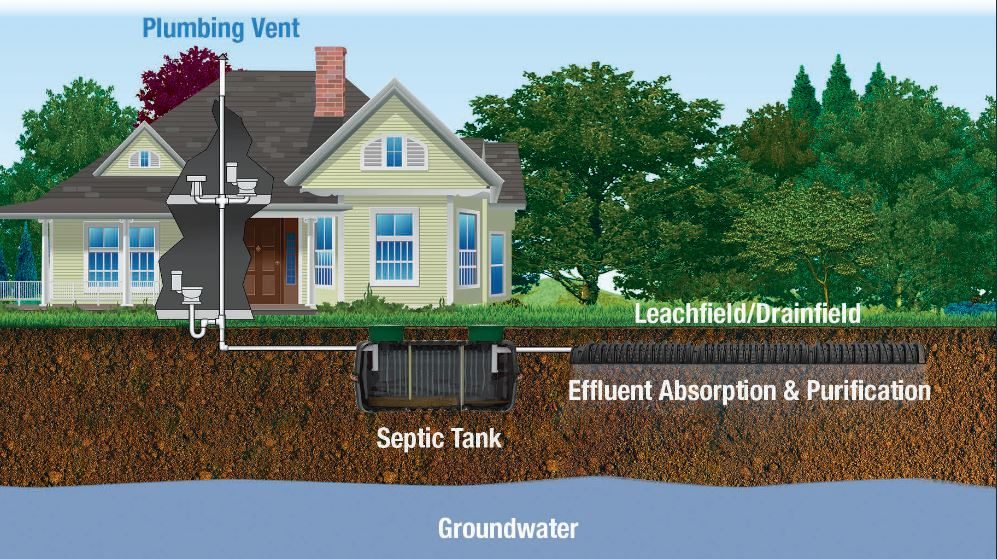
Accessibility for setting a new tank
Our house sits on a hill, far enough away from the street that it makes it almost impossible to get proper access. We ended up removing our fence to get access for the excavator and also the delivery truck for the septic tank. They actually had to use the excavator to pull the delivery truck up the hill, not due to weight of the ground being wet and not getting traction. It was just due to the steepness of the hill.
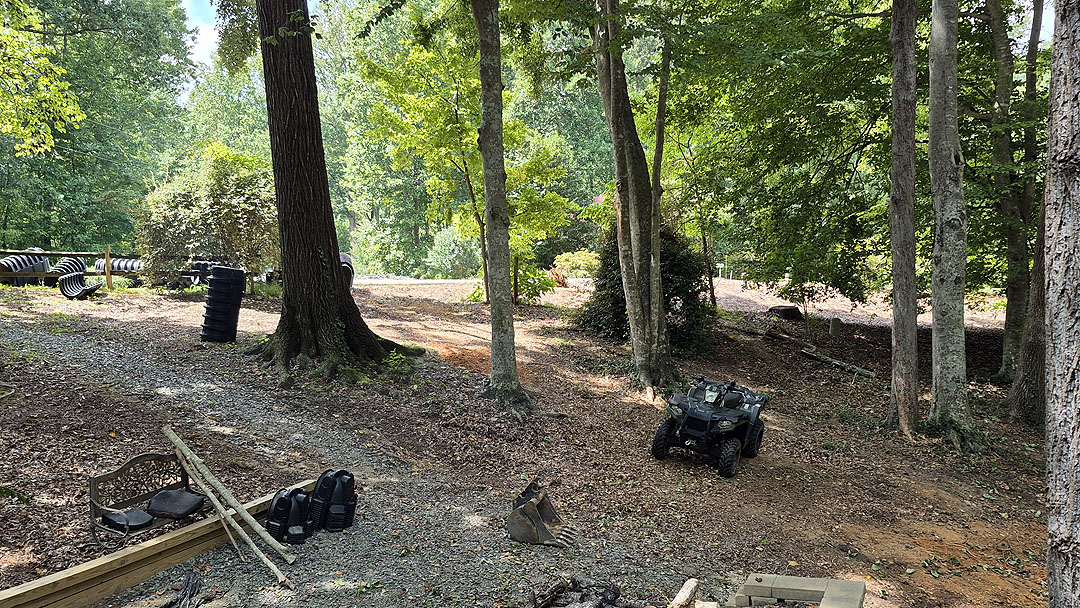
Septic Tank placed in the ground
Now that the tank was delivered and set in the ground, adding a couple of hundred gallons of water ensures that the septic will not “float” out of the ground if it rains. You wouldn’t think this is a real thing as the tank is solid concrete, however it is a reality of fluid dynamics that water is very powerful and can cause problems. However, the pro’s know this and why they add water to the tank especially on a hill like ours.
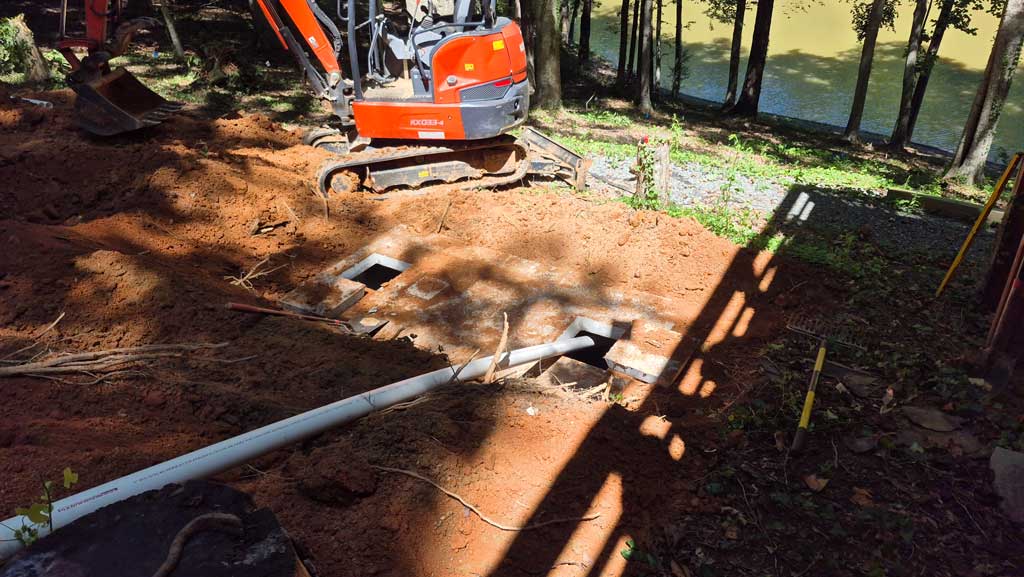
Adding Tail Lines (Infiltrator System)
Now that we have the tank in the ground, the next step is to build out the 640 feet of tail lines from the septic tank. This system Infiltrator, uses a PVC pipe from the tank to the chambers (think of them as half moon structures and the bottom is open to the ground). On the other end of the input side, is another PVC pipe leading to the next chamber.
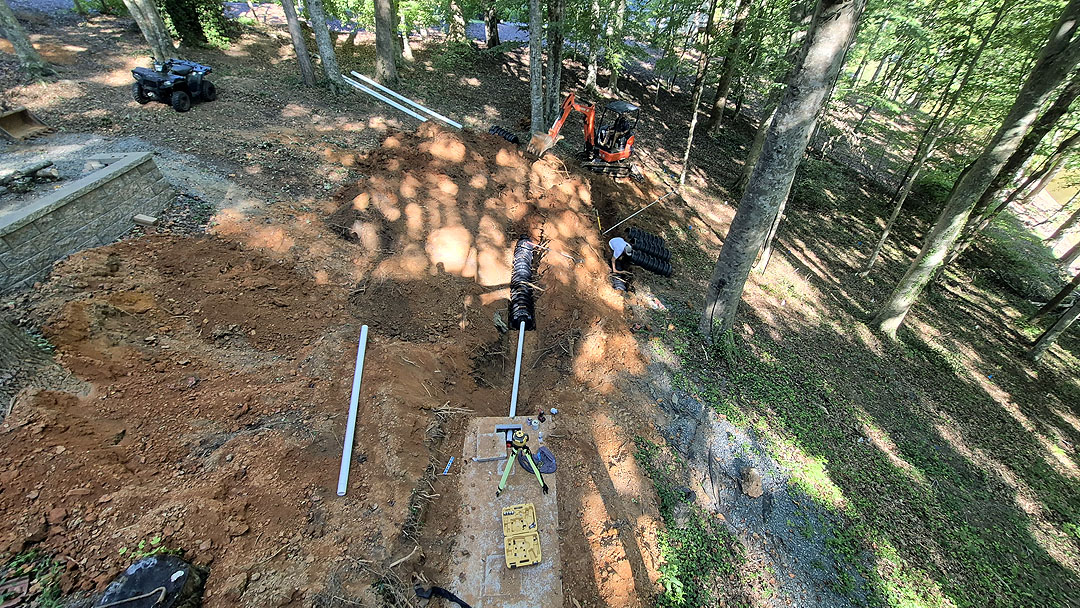
These chambers go all across the back of our yard in between our Beechwood trees. The Good news is we didn’t have any major roots get removed, only very small roots. The contractor noted, he felt like he saw large roots going down into the soil. A good thing to think about (how close is too close to trees?)? How good is your soil? In our case, the soil drains quickly – and perhaps why there are minimal surface roots.
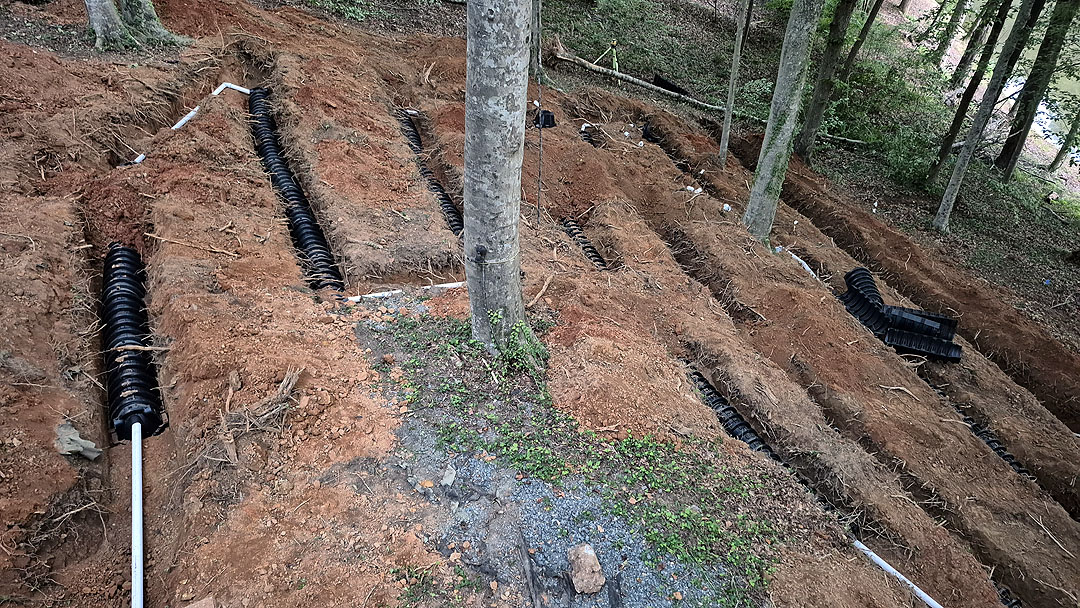
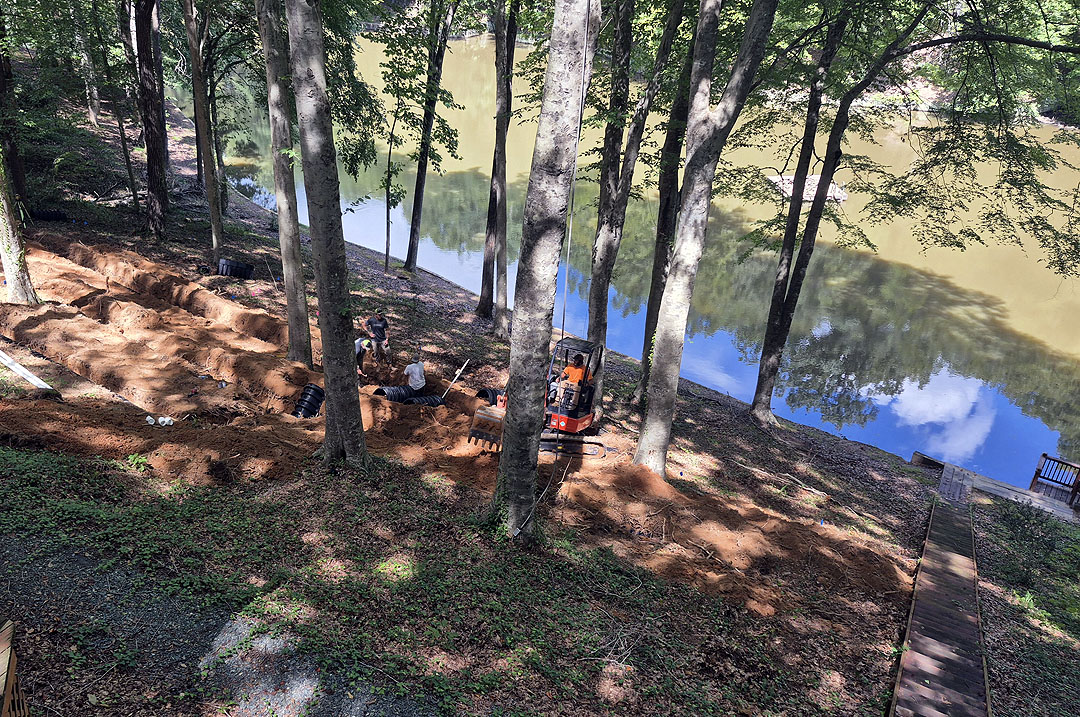
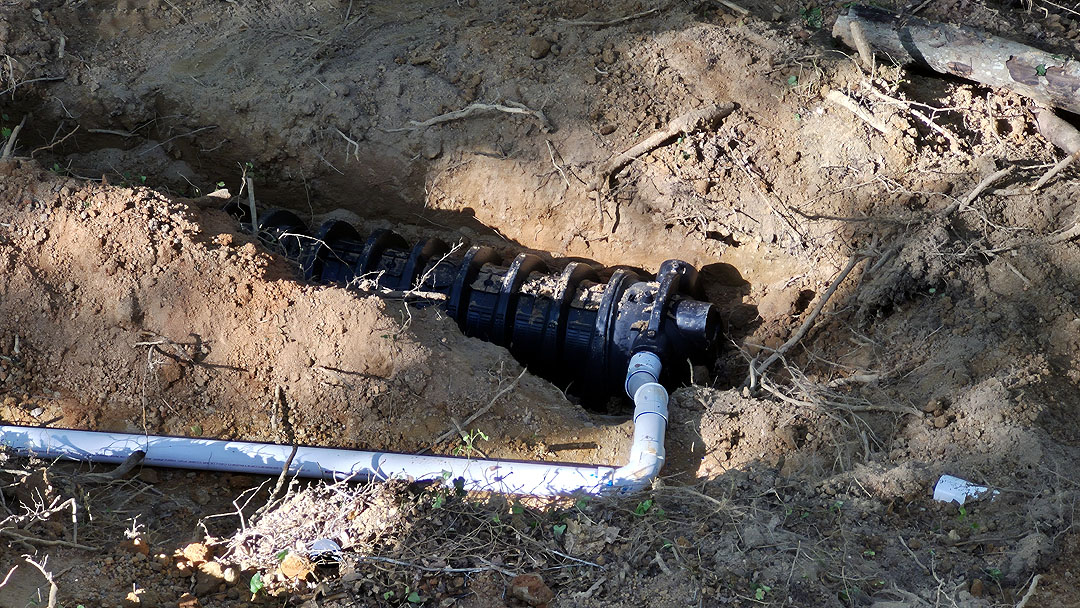
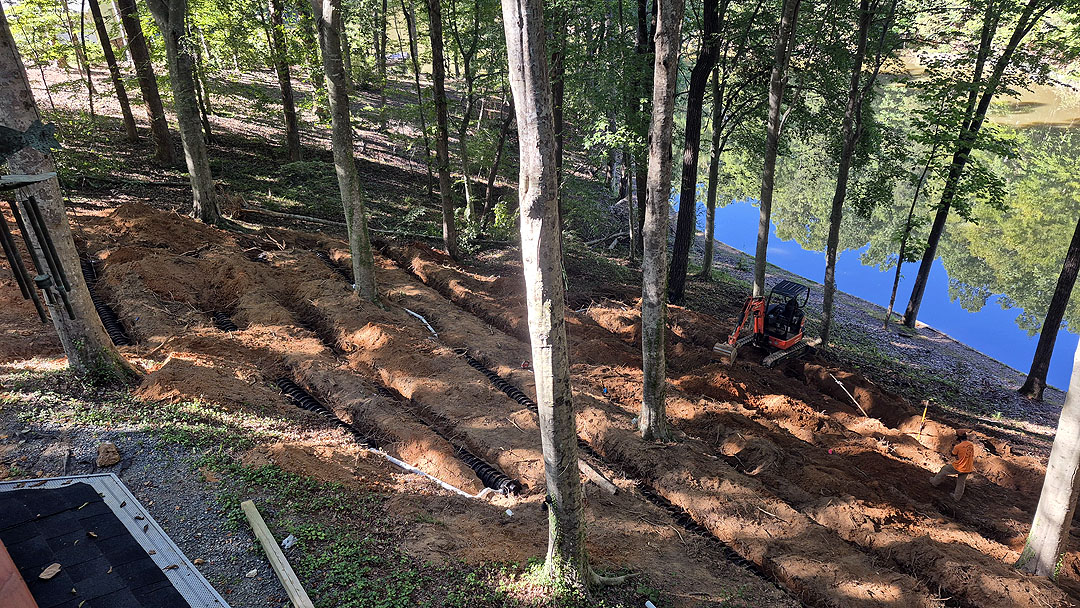
Finishing up the Septic Tank and Landscaping
You may not be thinking about it, but your yard will be destroyed. If like us, you live on a wooded hill, you need to do something about water erosion. We had to get 250 bales of pine needles at $7 a bale. It was not easy to swallow, but you don’t want to have your new septic system exposed due to rain and water runoff.
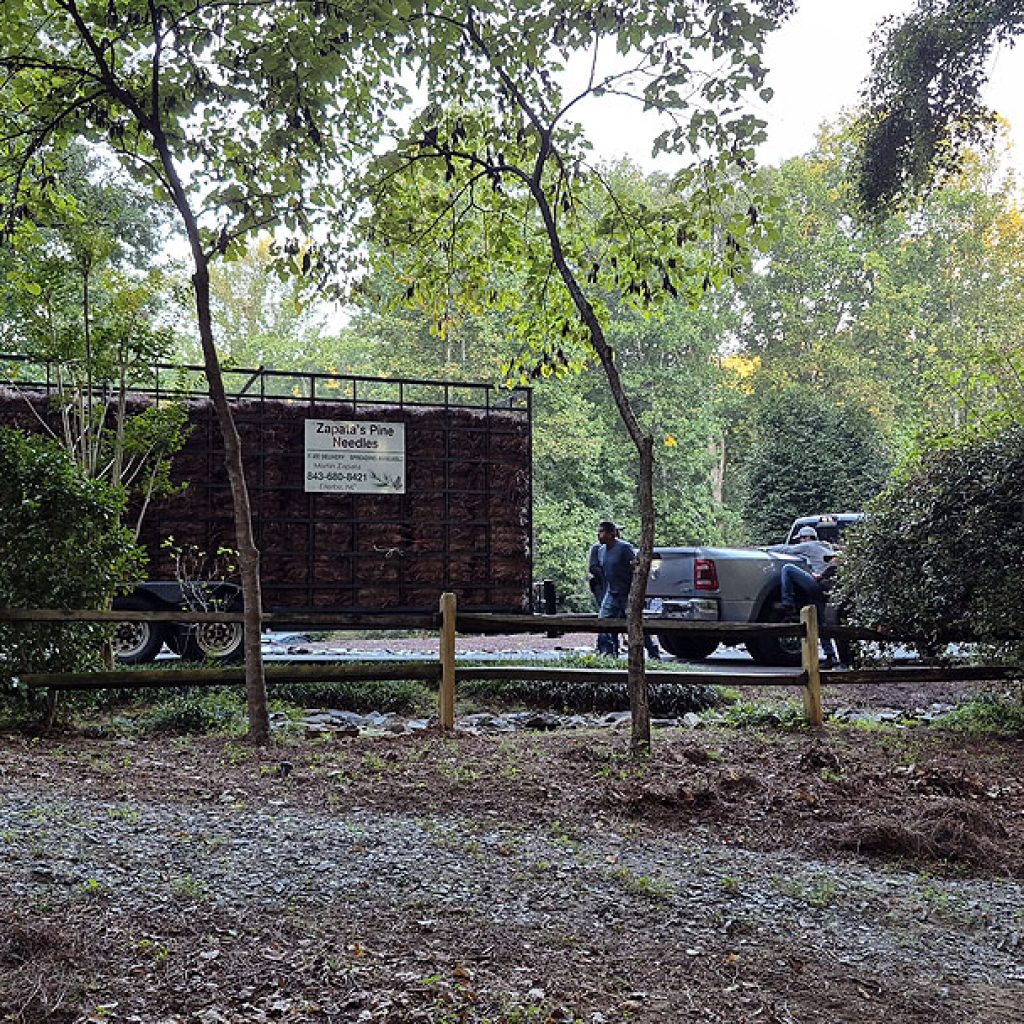
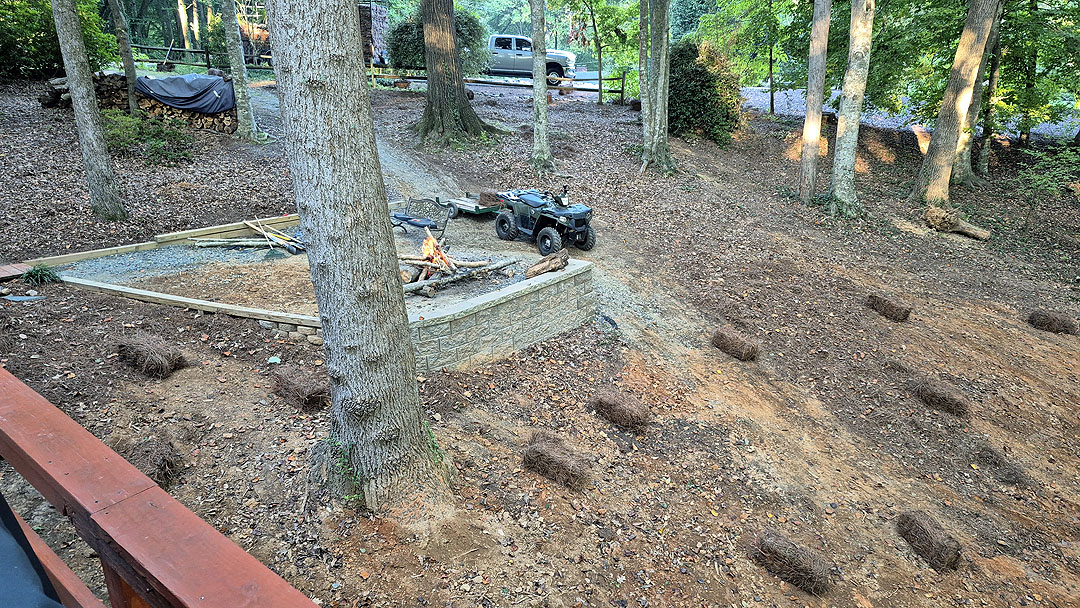
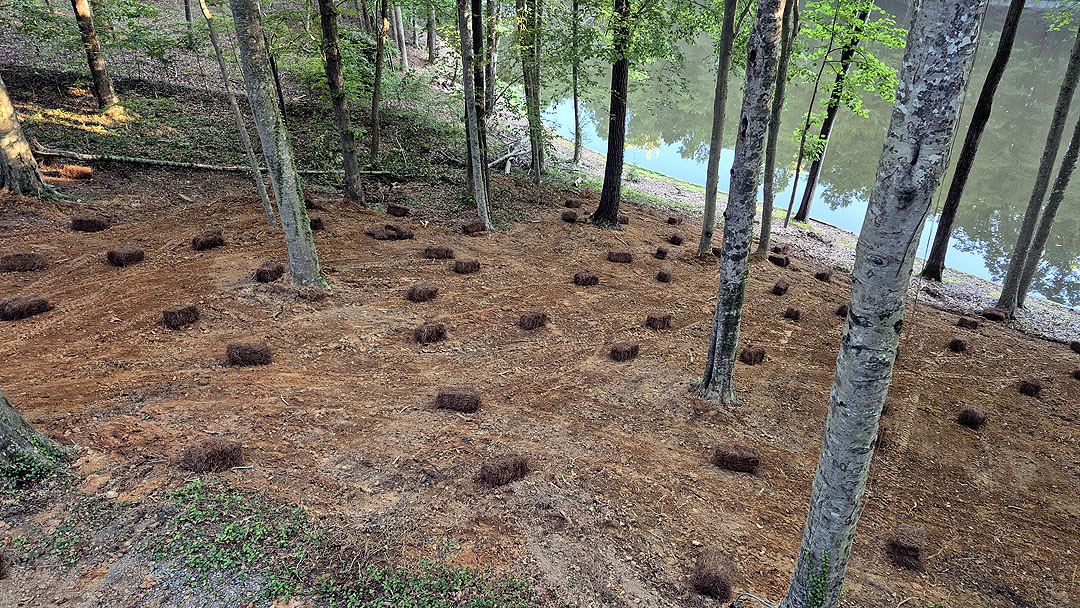
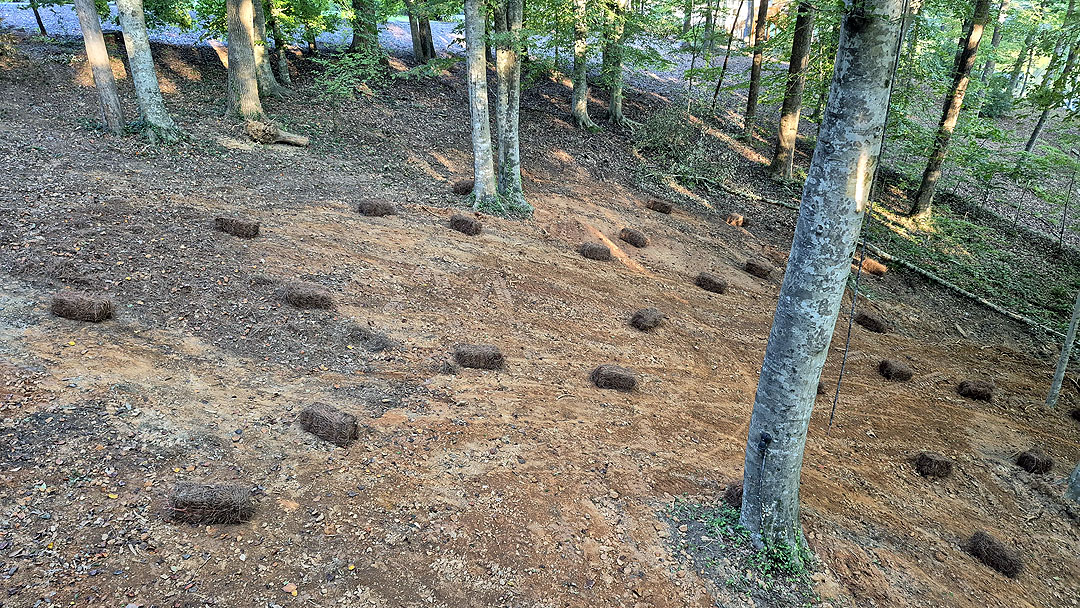
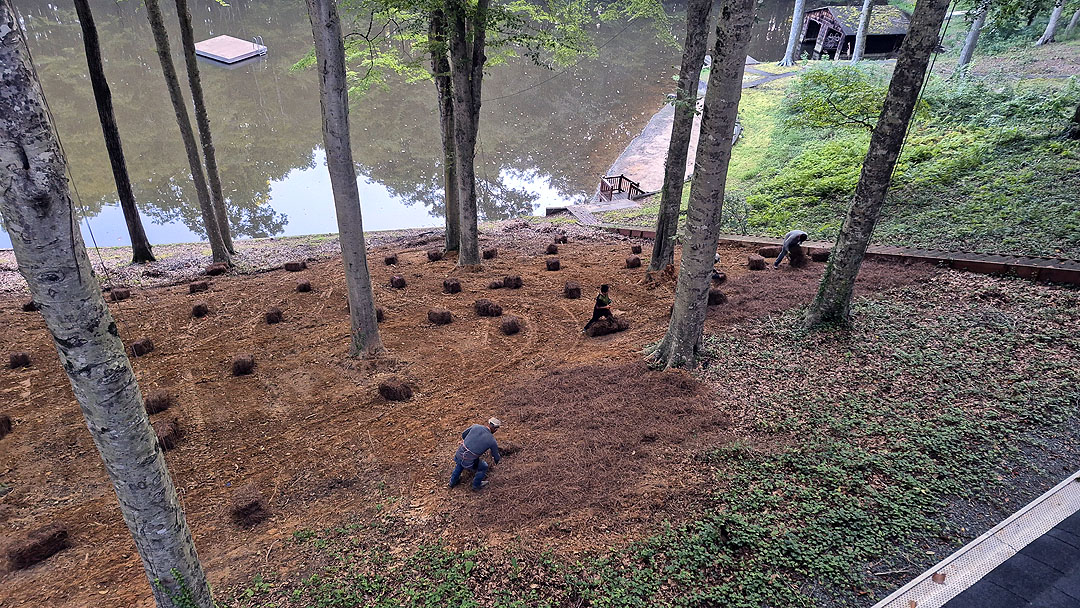
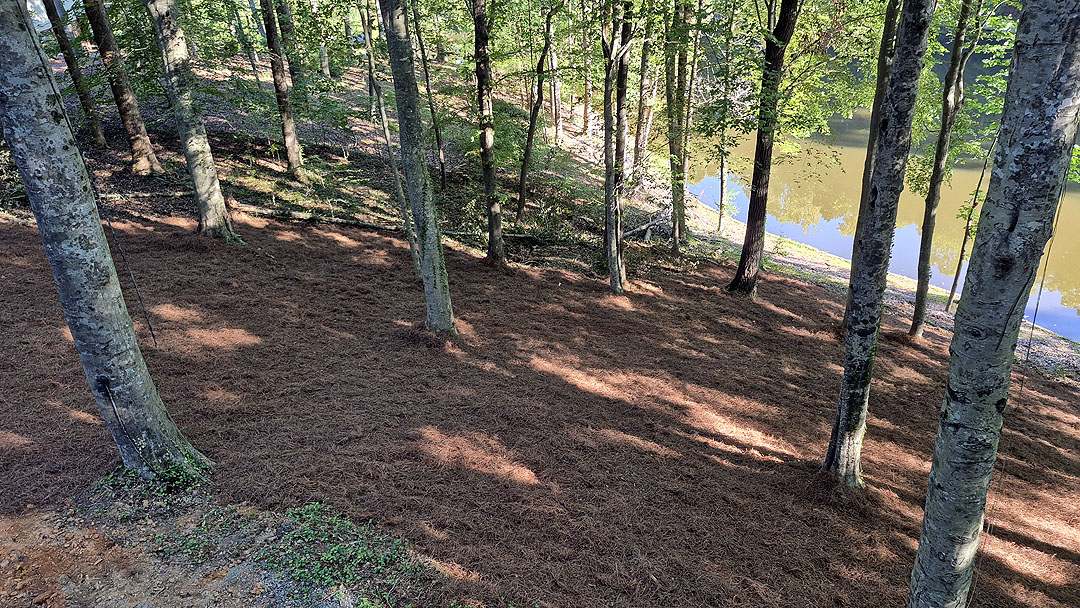
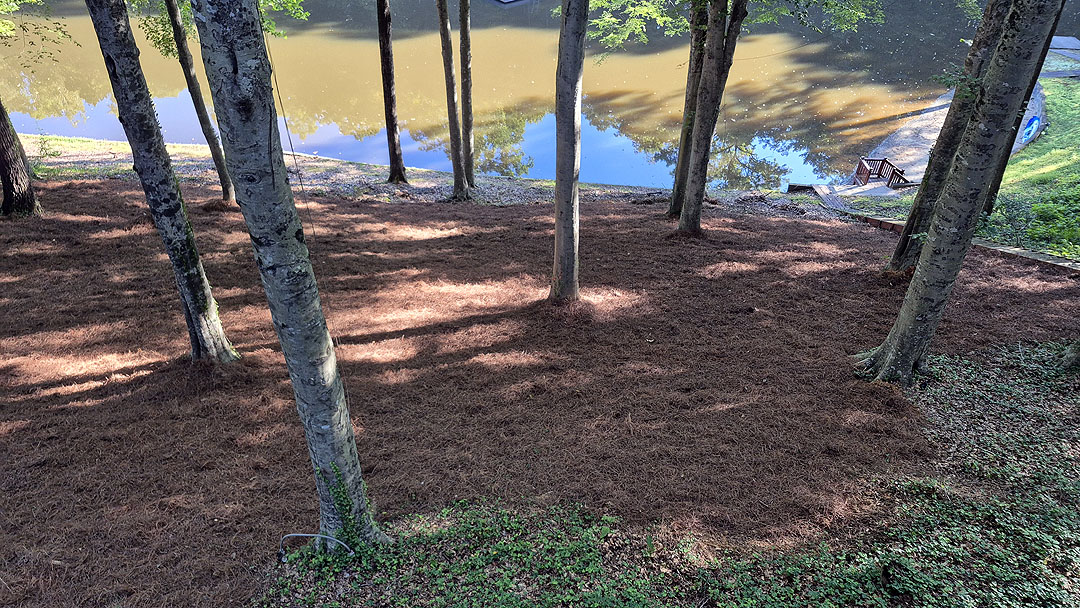
Once we were done, we wrapped up the firepit area and pathway with new stone.
Price Breakdown For Our Septic Tank Replacement:
- Basement plumbing: $2400
- New Septic System (tank, tail line installation, permit costs and inspection). Using a range to help you get an idea on costs) $19K – $25K
- Pine needles $1750
- Stone $1500
- Other landscaping needs; $500
Our system would be one of the more expensive systems to install. Both from a price standpoint due to the required system from the country and also our hillside location above a lake. You may not have any of the factors like our house, but I have heard of ranges from $8K – $17K on average. It is not so be prepared.
Now time to sit back, no longer worry about a leaky septic tank and enjoy nature. We are so glad we expanded our fire-pit… it turned out great!
Pro Tip: Avoid DIY septic upgrades, as improper installation can lead to costly repairs and legal issues.Benefits of Upgrading Your Septic Tank Upgrading your septic system offers numerous advantages:Environmental Protection: Modern systems reduce groundwater contamination.
Increased Property Value: A new septic system can make your home more appealing to buyers.
Cost Savings: Efficient systems lower maintenance and repair costs.
Peace of Mind: Avoid unexpected failures and health hazards.
FAQs About Septic Tank Upgrades
Q: How much does it cost to upgrade a septic tank?
A: Costs vary depending on the system type and location, typically ranging from $5,000 to $20,000. Get multiple quotes for accuracy.Q: How long does a septic tank upgrade take?
A: Installation usually takes 1–3 days, depending on the system and site conditions.Q: Can I upgrade my septic tank myself?
A: No, septic upgrades require professional expertise and permits to ensure compliance and safety.
Conclusion: Make an Informed Decision Upgrading your septic tank is a significant investment, but it’s crucial for maintaining your home’s functionality and value. By following this decision tree, you can assess your system’s condition, explore upgrade options, and choose the best solution for your needs. Always consult with a licensed professional to ensure compliance with local regulations and optimal system performance.Ready to take the next step? Contact a local septic expert today to schedule an evaluation and start planning your upgrade!Call to Action: Share this guide with homeowners considering a septic tank upgrade, and leave a comment below with your questions or experiences!
Thanks to all of our Contractors. We could not have done this without you! If you are local give them a call.
| Septic Unlimited Septic Installation and Repair Walkertown, NC Email: septicunlimited@gmail.com Cell: 336-409-3200 | Water Purification Consultants (Plumbing) 682 Blue Rock Ct Winston-Salem, NC 27103 Phone: (336) 724-4664 Web: Waterpuro.com |
Until next time!


